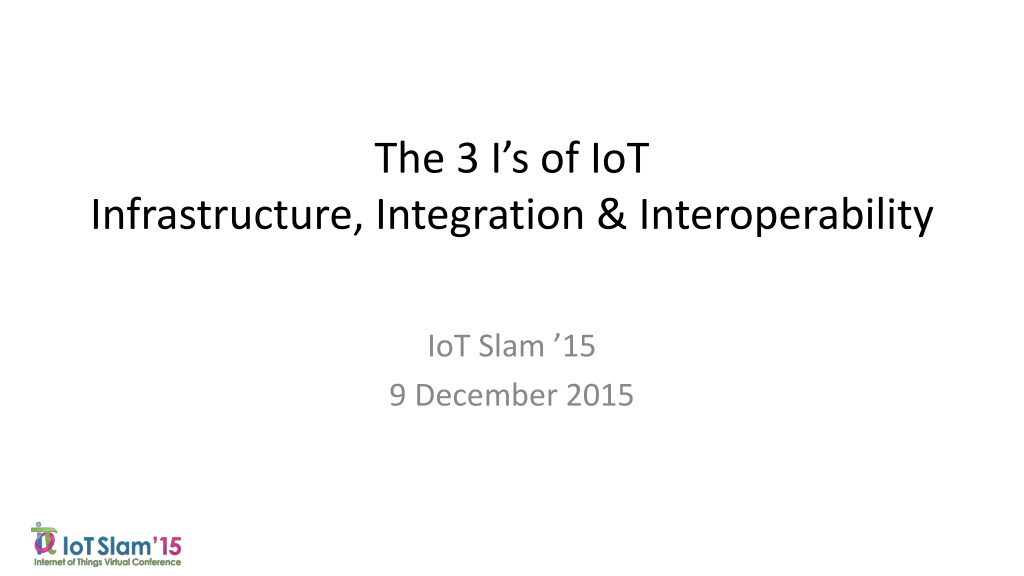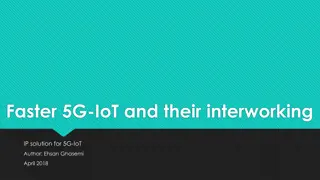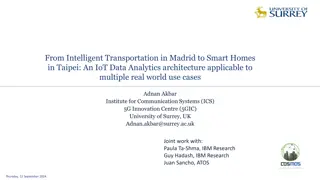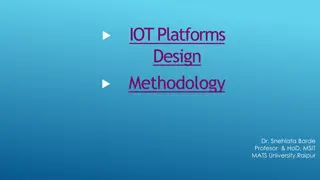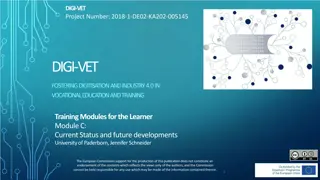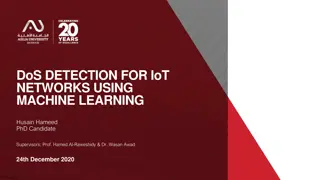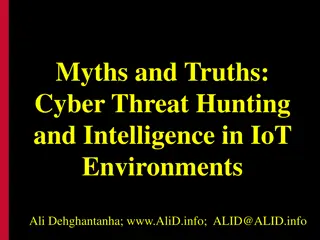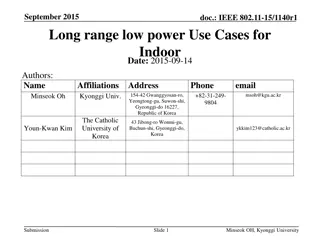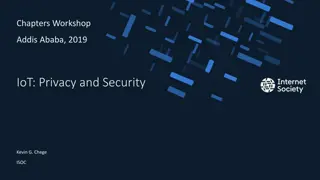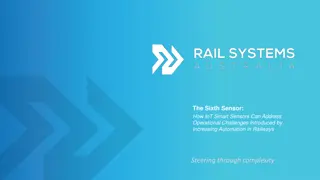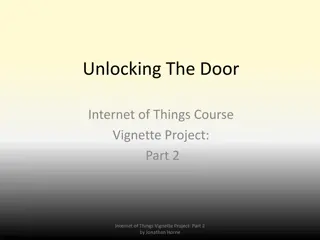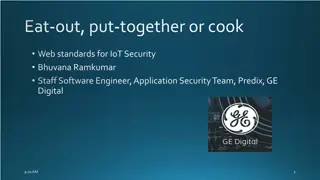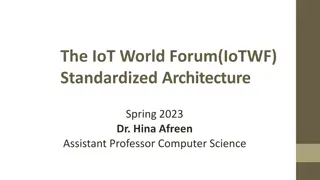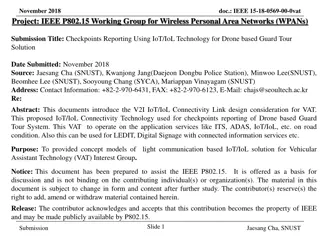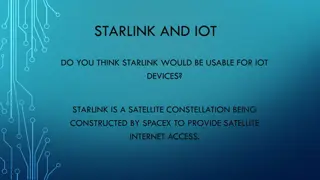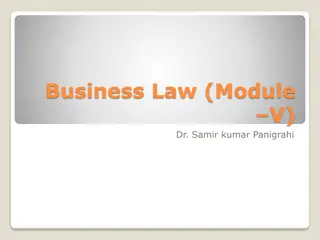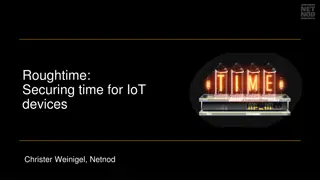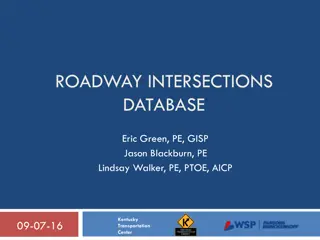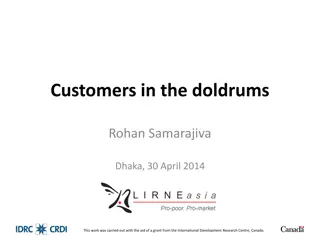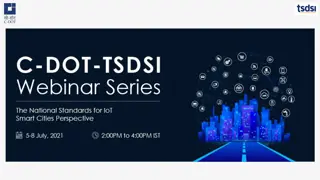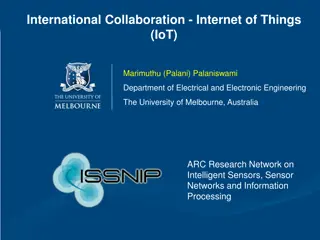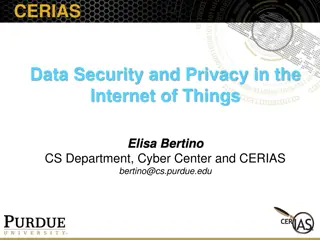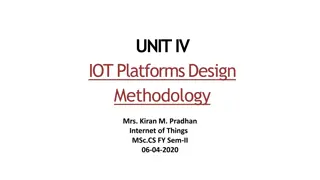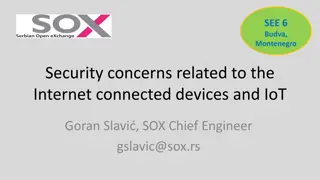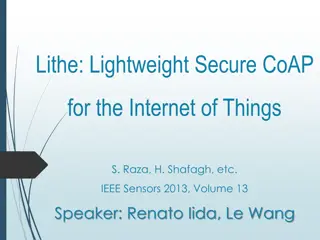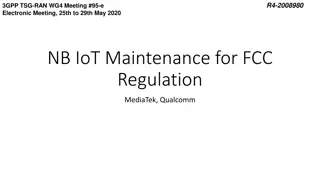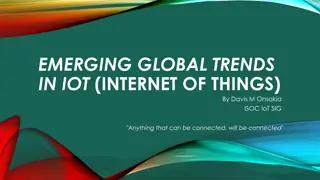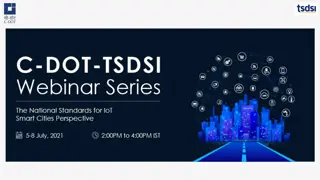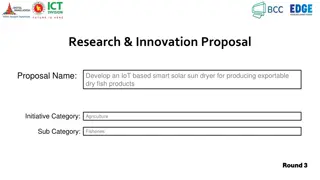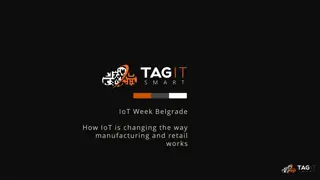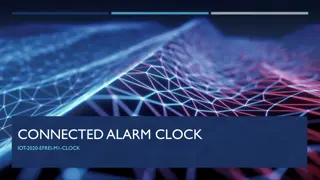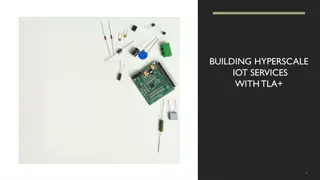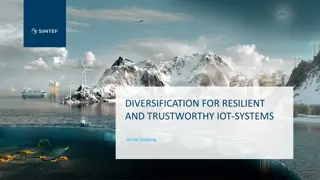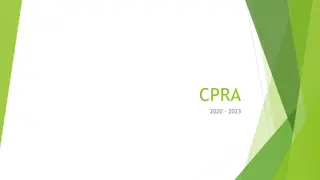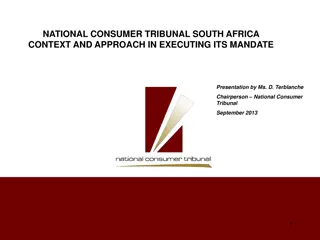Exploring the Intersection of Consumer and Industrial IoT Environments
Delve into the complexities of integrating IoT into consumer and industrial settings, focusing on infrastructure, interoperability, and the distinction between the two environments. Understand the key considerations, challenges, and use cases for IoT implementation in different sectors.
Download Presentation

Please find below an Image/Link to download the presentation.
The content on the website is provided AS IS for your information and personal use only. It may not be sold, licensed, or shared on other websites without obtaining consent from the author. Download presentation by click this link. If you encounter any issues during the download, it is possible that the publisher has removed the file from their server.
E N D
Presentation Transcript
The 3 Is of IoT Infrastructure, Integration & Interoperability IoT Slam 15 9 December 2015
The Panel Steve Blackwell VP Engineering Jim Hunter Chief Scientist & Technology Evangelist Clarke Stevens Chairman, IoT Task Force Emerson Greenwave Systems CableLabs and UPnP Forum Rich Miller CEO Telematica Inc. [Moderator] 9/28/2024 2
Our Charter Consider the road-map for smooth IoT transition Prevention of data loss and attention to privacy issues, Maintain control of operations and assets, Prosper & grow during a period that lacks unified standards and interoperability among providers Future-proof solutions to deal with the complexities that often arise in the implementation and operational phases of adoption. How do we identify the important distinctions in setting out a path which considers legacy without crippling the future? 9/28/2024 3
The Questions Given the incumbent systems, and the newly created infrastructure(s): Who are the constituents for whom IoT infrastructures must be constructed and operated? What are the constituent parts and what values are paramount in our efforts for interconnection and interoperability? Have we made the proper distinctions between Consumer IoT and Industrial IoT? The legacy systems that must be integrated and the newly designed, newly built systems being predicted? 9/28/2024 4
The Conversation So Far We consider (at least) two distinct IoT environments Consumer IoT: in which IoT weaves seamlessly with the end-user s life, and must interwork with other systems for which it was not originally designed Industrial IoT: in which IoT weaves seamless with the user s job or enterprise process, and must interwork safely, with service levels specified (sometimes rigorously) Primary Use Cases Differentiate Industrial and Consumer IoT Why am I instrumenting the system ? Consumer IoT: The quantified self and Automation of the consumer s environment Optimizing the consumer s experience Industrial IoT: Predictive analytics and maintenance Optimization and Service Levels The incorporation of data from widely distributed, dispersed data 9/28/2024 5
Focus: Consumer IoT (vs Industrial) Safety as a major consideration Safety = Security + Privacy + Certification Scalability & Speed For the predicted numbers of IoT devices, platforms must be able to spin up on a moment s notice Interaction and control Consider Things as if they were Agents Hire & Fire your Things Use accepted paradigms of communication from social media, instant messaging, email and shared calendared events 9/28/2024 6
Focus: Industrial IoT (vs Consumer) Consider our legacy Integration of (currently incompatible) existing equipment with new IoT data sources Interactions of existing sytems data output in new, un-planned ways with one another and with newly implemented systems The operation, administration and management of industrial IoT What s riding on Industrial IoT is (arguably) our well-being It emphasizes more effective, efficient and maintainable systems It emphazizes resilience and availability of the systems on which we rely 9/28/2024 7
Its the 3 Is and the 3 Ss We like the 3 I s, but Safety (Security + Privacy) and Scale are under-emphasized Aren t we REALLY dealing with more than Infrastructure, Integration & Interoperability, as early considerations? What about Safety (Security + Privacy) of data, without which we are sure to fail Scale the massive numbers of devices, sensors and messages as well as the requirement that changes is scale must be almost immediate the Speed at which the build-out of infrastructure must occur and at which implementation of (eventually) interoperating systems must occur It may truly be the 3 I s and the 3 S s 9/28/2024 8
Legacy and Futures with the 3 Is Legacy Integrating things that are already in place Weren t put in place with the intention of interworking Early success in IoT will depend on our ability to accommodate legacy technologies Futures The challenges of integration, interoperability and consolidation going forward will be those of interoperation with infrastructure and data sources which were not designed at the outset for the fusion 9/28/2024 9
Are we agreed? [a] Integration includes not only the infrastructure and foundational services, but must address data integration and then unification of datasets over time for predictive analysis and new forms of control [b] Interoperability must be considered firstat the lowest layers of infrastructure, and must early on consider the successful incorporation of legacy technology. [c] Interaction & Control (particularly for Consumer IoT) should rely heavily on treating Things as Agents with which/with whom we communicate. (Could this be the 4th I ?) [d] Infrastructure, Integration & Interoperation must be accompanied by considerations of Security, Scale and Speed. 9/28/2024 10
